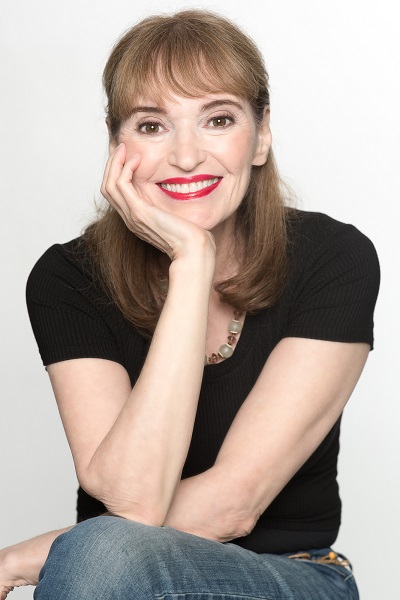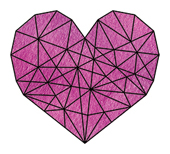My grandmother could transform a garment with her needle and thread. “It’s my mending day,” she’d say. I found the process intriguing and her talent singular. My mother couldn’t do it, and my only contribution to the process was threading the needle, because I had “good young eyes.”
This association is probably why I filed away that phrase “to mend one’s ways” the first time I heard it. If people could fix frayed lives the way my grandmother dealt with errant hems and seams and buttons, nothing was irredeemable. We could remake ourselves and restore ourselves as we went along. It would be half a lifetime later before I connected this mending process with wellbeing, turning “MEND” into an acronym for healthy living:
- Meditation,
- Exercise,
- Nourishment,
- Detoxification.
Personally, I’ve had a checkered history with self-care. I learned binge-eating in childhood despite (or because) of my dad’s being a diet doctor and both my parents’ near obsession with staying fit. I, on the other hand, avoided recess whenever possible – “Miss Rogers, may I stay in and wash the chalkboards?” After my parents divorced and my mother remarried and moved to Spain, I mostly learned “girl stuff” from magazines: Seventeen, Glamour, Mademoiselle. It made sense, then, that by my early twenties I was writing for magazines myself. I believed that if I interviewed enough experts and relayed their wisdom with sufficient intent, I’d come to do by nature what the lean, amazing women on those pages did, the ones with the sculpted arms and flawless skin.
In my early thirties, I went into recovery for my eating disorder and, finally having the power of choice around food, I chose to become vegan. That was my great foray into holistic thinking: I stopped eating animals for the sake of the animals, and in turn I was able to stop dieting, lose the weight, and embrace the adventure of living well in my own real life, not just through the articles in those magazines.
I also learned that it wasn’t about arms and skin. And now, later in life when most of my peers, and myself, would take great blood work over great arms any day, I see that it isn’t about blood work either, as important as that can be. Living with vibrancy for a whole life is built on putting into place certain practices that tend to every aspect of who we are, body and spirit.
It doesn’t call for spending a lot of money or an inordinate amount of time. It does take a little of the former and more of the latter, but not more than a regular person with a job and a family and another job and a thousand Facebook friends can invest. It’s simply learning that the 4 Healing Habits aren’t some hygiene class checklist, but rather a ticket to great vitality and grand adventures. When meditation, exercise, nourishment, and detoxification become commonplace in a life, they simplify self-care and change, well, just about everything.
Meditation can apply to formal practice or whatever works for you as “quiet time.” The research showing that meditation correlates with lower blood pressure, blood sugar, cholesterol, and BMI, that meditators have fewer sick days, and that meditating regularly for five years or more takes a whopping twelve years off one’s physiological age, looks at serious meditators. Nearly all focused on either practitioners of Transcendental Meditation, a mantra technique done twenty minutes in the morning and twenty minutes in the late afternoon; or Insight (Vipasana) meditation, a breath-based Buddhist technique. However, something I’ve learned from life is that nothing works that I don’t do. If you can discipline yourself to regular meditation using a proven system, the science is on your side. And if you’re willing to be quiet for a period of time each day in some manner that suits you — contemplation, journaling, prayer, or being a little less quiet and chanting if that’s your style — you’ll reap benefits.
Exercise never appealed to me. Of course it’s vital, and ever more so as we grow older, but as I’ve already told you, I didn’t even like recess, much less PE class. That changed a tiny but powerful bit when I was seventeen and discovered yoga. It let me move my body and bring my soul along. I loved it then and love it still. Even so, I’ve spent the intervening half-century convincing myself that I ought to be a jock. Every New Year’s, the lead resolution has been: Get fit — i.e., Western gym-style fit. And every New Year that eventually grew old, I’d fall away from the gym and feel that I had failed, yet again. Then it occurred to me: I can do yoga every day. Now, obviously, if I do only restorative yoga and never exert myself, I’m not fooling anybody, but if I do active and strength-building forms of yoga, I can be fit, body and soul, and do it my way. So exercise: your way.
Nourish yourself with the best food available — healthiest (based on what you know today), best tasting, most attractive – and eat in a way that nurtures you: sitting down, cloth napkins, dishes that would break if you dropped them. As I’ve said, my attraction from early on was to eat plants and let the animals be. I’ve never regretted that. And now that I understand the tremendous impact on climate change that comes from animal agriculture — according to both the UN and the World Bank, it’s more than all transportation combined — I’m doubly grateful to have gone vegan when I did. There are lots of ways to eat that can lead to personal health, but for holistic health, it seems to me that we have to think about the wellbeing of others, the planet, and ourselves. What seems to you to be the “best food available”? That sounds like a great choice for dinner.
Detoxify – Clean living rocks. Detoxing isn’t some exotic discipline that calls for fasting or an exotic cleanse, although these can certainly play a role in health maintenance for many people. The basic idea is to support your body’s systems of detoxification (skin, kidneys, colon, lymphatic system) with plenty of fluids, a high-fiber diet, exercise, massage, and a decrease in the toxic load coming in from the outside. Nontoxic cleaning products and natural cosmetics, deep breathing (ideally outdoors), fresh green juices and a high water-content diet (lots of fresh vegetables and fruits), dry skin brushing, a massage or reflexology treatment once a month if you can afford it can all be part of toxin-minimal lifestyle.
And just as you can detoxify the contents of your bathroom cabinets and the cupboard under your sink, you can detoxify the contents of your consciousness. Every negative emotion you turn from, every resentment you allow to heal, every regret you allow to dissolve is a soul detox that will affect every part of you. It might take some work and it might take some help, but the energy is at your disposal and the help is available. Know this, and act on it.
Copyright Victoria Moran 2020. All Rights Reserved.
 |
 |
 |

Victoria Moran has been associated with Soulful Living for the past 15 years. She was listed by VegNews among the “Top 10 Living Vegetarian Authors” and has written fourteen books on wellbeing and compassionate living, including Creating a Charmed Life, Main Street Vegan, and Age Like a Yogi. She hosts the Main Street Vegan Podcast and is a founder and director of the Compassion Consortium, an online spiritual center for animal advocates. Victoria was lead producer of the 2019 documentary, A Prayer for Compassion, on spirituality and food choices, and is now in pre-production with Miss Liberty, a feature film that tells the story of a fictional dairy cow who escapes from a slaughterhouse and the human drama that ensues. She lives in Manhattan with her husband, Interfaith minister Rev. William Melton; James, an adopted chihuahua; and Thunder, a visually handicapped pigeon, rescued from the streets of New York City. Find her at https://www.victoriamoran.com, and on Instagram @VictoriaMoranAuthor.




